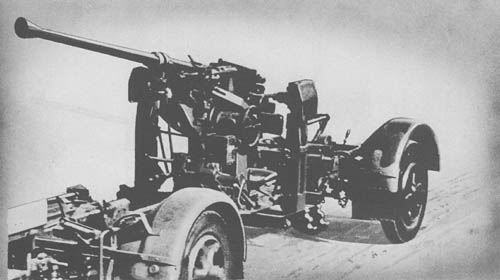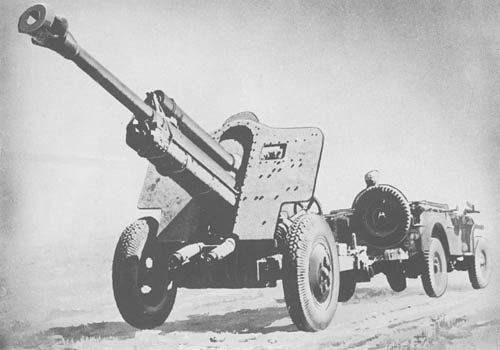
This gun, recently captured in Sicily, has the general simplicity of design characteristic of most Russian weapons. This was formerly a Russian piece, modified by the Germans to use Pak 36 (r) ammunition. The tube which is provided with a jacket is shorter than the Russian 7.62 cm F.K. 36, and is fitted with a double baffled muzzle brake, similar to that used on the 7.5 cm Pak 40. The breechblock is of the vertical falling block type, and appears to be wholly hand operated.
The buffer is located inside the cradle, whereas the recuperator is mounted above the piece. On recoil, the recuperator cylinder moves with the barrel, the piston rod being attached to the upper end of the bracket which is secured to the forward end of the cradle.
Sighting gear consists of a range drum (calibrated for use with
Traversing and elevating mechanisms are operated by handwheels on the left and right hand sides of the gun.
The weapon is mounted on a crosshead consisting of a short hollow rectangular shaft provided with bearings at either end for the trail heads. The split trails, constructed from rectangular girders, are operated by traversing handles secured to each trail end. Wheels are disk type with pneumatic type tires filled with synthetic.
The shield is a single flat sheet of metal cut away at the lower corners for the wheels. The top is curved upward to the center where there is a sliding center piece over the barrel. A rectangular sighting aperture with sliding cover is cut out on the left hand side in front of the dial sight carrier.
SPECIFICATIONS
| Caliber | 76.2 mm | |
| Length (overall with muzzle brake) | 11.4 ft. | |
| Length of barrel (including breech ring) | 10.4 ft. | |
| Length of barrel | 299 cm (9.8 ft.) | |
| Rifling | 32 lands and grooves; R.H. twist | |
| Length of rifling | 215 cm (7.05 ft.) | |
| Max. range | 14,216 yds. | |
| Wt. in action | 3,535 lb. |
German: p. 115
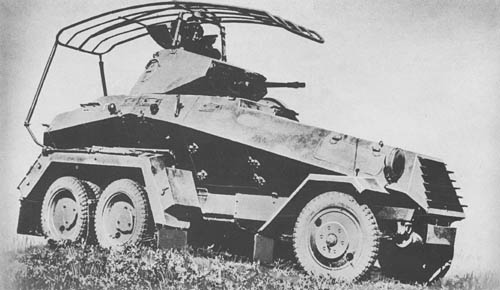
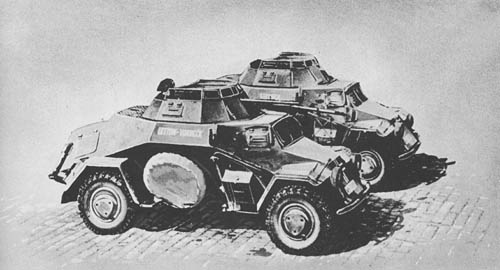
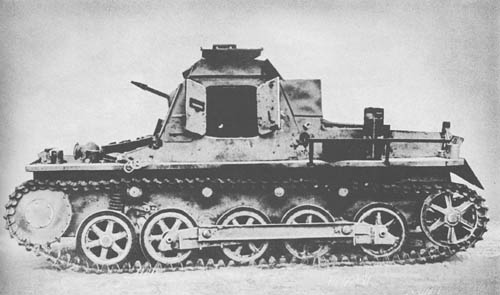
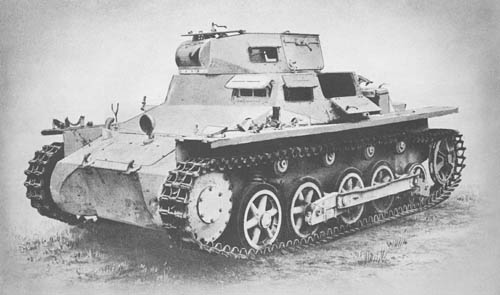
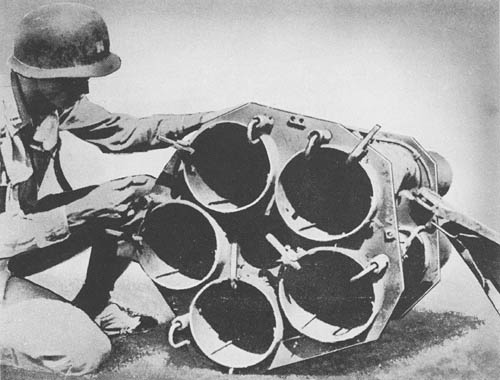

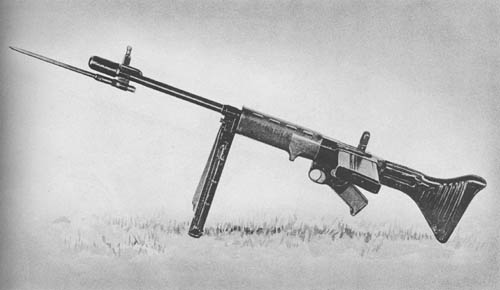
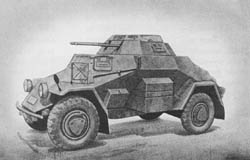 German nomenclature: leichter Panzerspähwagen (Sd. Kfz. 222) mit Einheitsfahrgestell I für schwerer Panzerkraftwagen.
German nomenclature: leichter Panzerspähwagen (Sd. Kfz. 222) mit Einheitsfahrgestell I für schwerer Panzerkraftwagen.